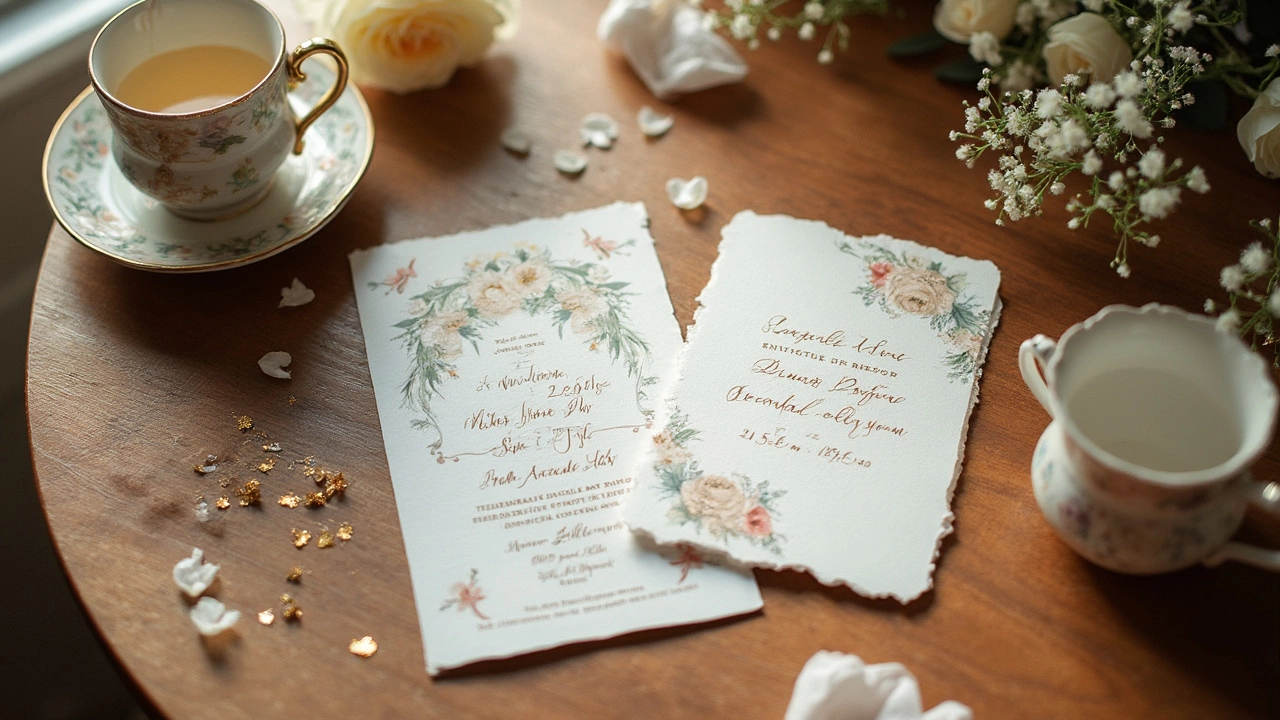Ultimate Wedding Stationery Guide: Invites, Save‑the‑Dates, RSVP Cards
Planning your wedding paper trail can feel like a side quest, but the right stationery sets the tone for your whole day. From the first save‑the‑date to the final RSVP card, each piece tells guests what to expect and makes them feel included. Below you’ll get the basics you need to get started, plus a few pro tips that save time and money.
What Goes on a Wedding Invitation?
Every wedding invite needs a few must‑have details. First, list the couple’s names exactly as you want them on the card. Next, include the full venue address, ceremony time, and reception start time. Add a line for dress code if you have one – “black‑tie optional” or “garden casual” clarifies expectations. Don’t forget a polite RSVP request with a deadline, usually three weeks before the big day. If you have a wedding website, add the URL so guests can find travel info, accommodation suggestions, and the gift registry all in one place.
Some couples also include a short note about parking or special instructions for out‑of‑town guests. Keep the wording simple and friendly; you’re inviting people to celebrate, not delivering a legal contract.
Save‑the‑Date, RSVP Cards & Mailing Tips
Save‑the‑dates go out first, typically six to eight months before the wedding. If you’re hosting a destination wedding, send them even earlier – eight to ten months – so guests can book travel. A digital save‑the‑date works if you’re on a budget, but a printed card adds a tactile feel that matches your invitations.
When it comes to RSVP cards, a common question pops up: what does the “M” on the card mean? It’s short for “Male” and is part of the old gender‑specific wording (Mr./Mrs.). Modern etiquette lets you skip it entirely, using a simple “Accepts with pleasure” or “Regrets, cannot attend” line.
Mailing weight matters too. Most standard wedding invitations weigh between 3.5 and 4 ounces. If you add extra layers like a thick vellum overlay or a small pocket, double‑check the weight so you don’t overpay on postage. The Royal Mail (UK) has a flat rate for 100‑gram items, which covers most typical invitations.
Finally, set a clear RSVP deadline – usually three weeks before the wedding. This gives you enough time to finalize headcount, seating charts, and catering numbers. If you haven’t heard back by the deadline, a polite text or phone call works best.
Having the right stationery in place keeps your planning smooth and makes guests feel welcomed. Use these basics as a checklist, add your personal style, and you’ll have a paper trail that matches the magic of your day.

- Jun, 18 2025
- Comments 0